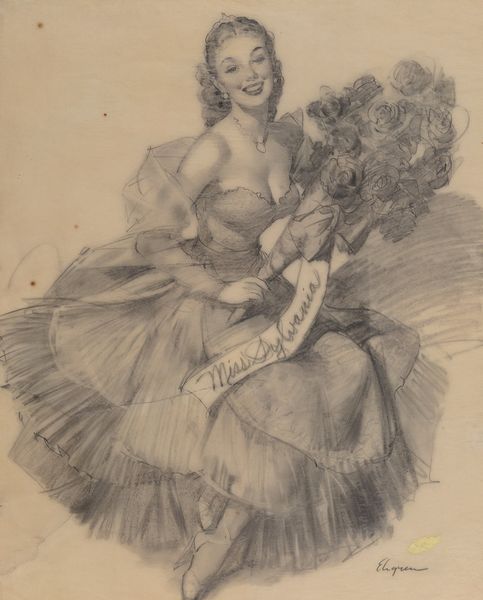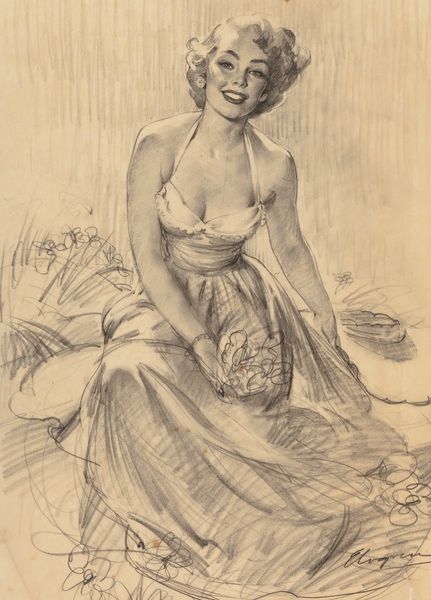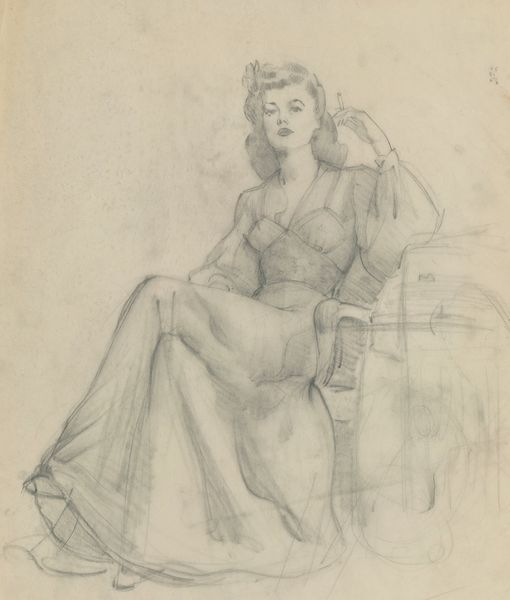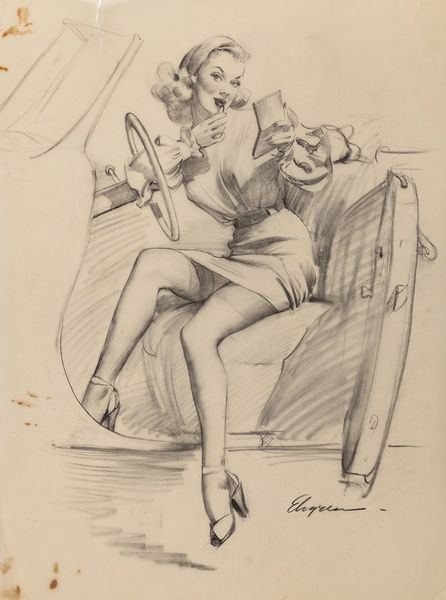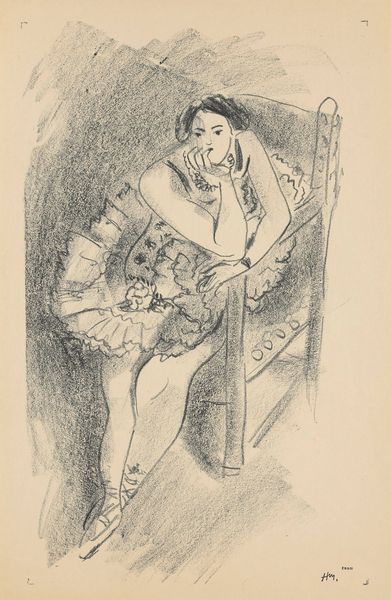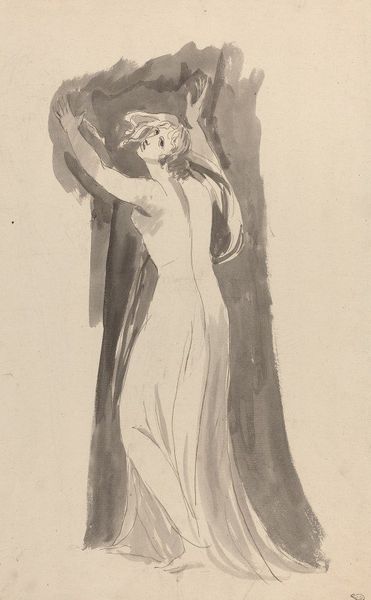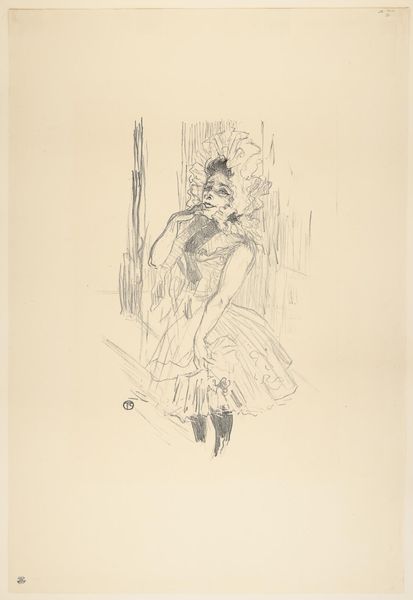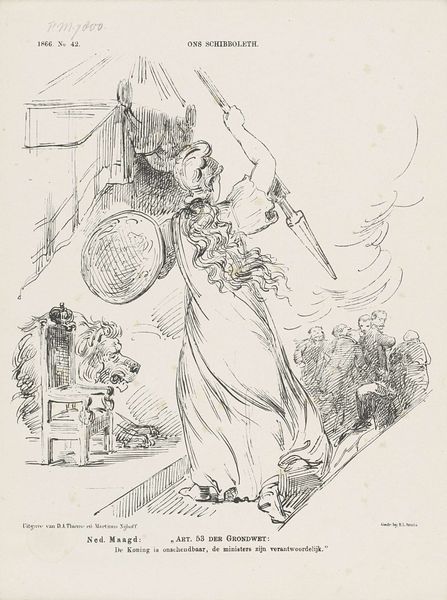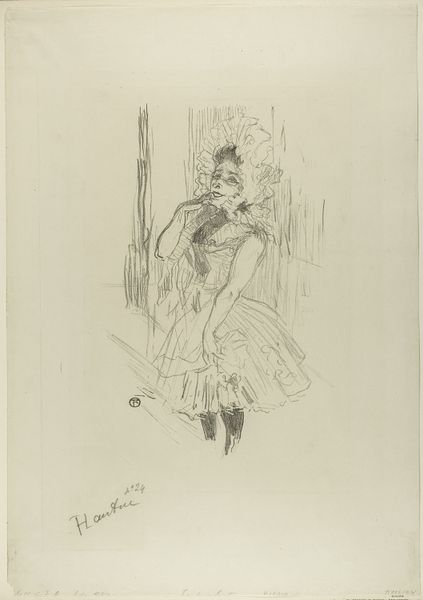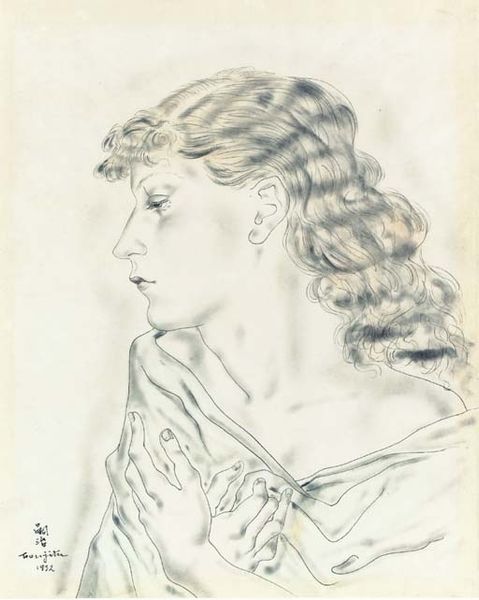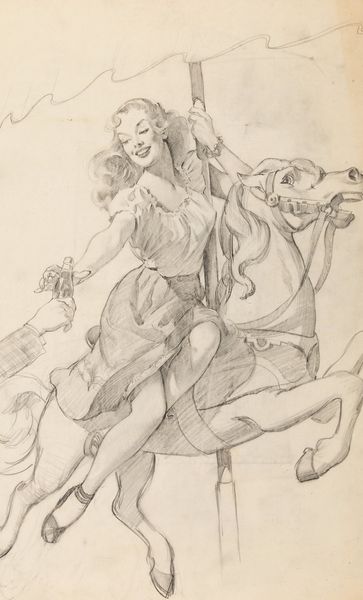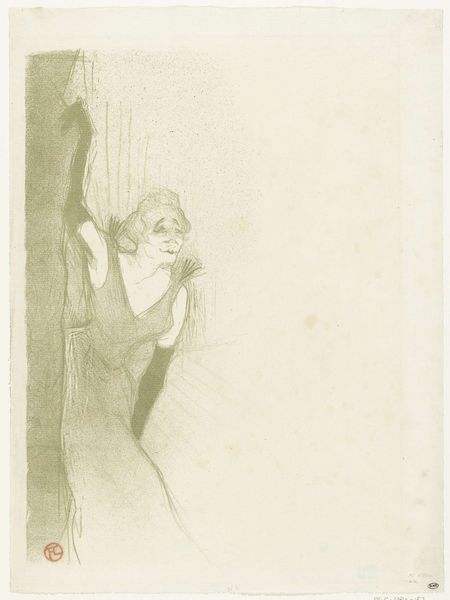
drawing, pencil
#
portrait
#
pencil drawn
#
drawing
#
pencil sketch
#
charcoal drawing
#
figuration
#
pencil drawing
#
pencil
#
portrait drawing
#
realism
Copyright: Modern Artists: Artvee
Curator: I’m struck by the energy in Gil Elvgren's 1946 pencil drawing, “Peering Through the Window.” There’s such spontaneity in the marks, like the artist was trying to capture a fleeting moment. Editor: Absolutely, it gives off such a sense of lightheartedness, doesn't it? A casual glance almost… though perhaps a little too coy and idealized. I find myself more interested in what Elvgren's choice of such commonplace materials—pencil on paper—says about art production during that postwar period, considering gender roles, consumption, and labor too. Curator: I see what you mean. Looking closely, I think this piece represents something very deliberate about the ways women were marketed at the time. You notice it? The composition suggests a stage, where the female figure becomes almost performative within her domestic space. Note the detail on the windowsill and then the lush sketch-like style of the medium – it doesn't hide the mechanics of the work and display either. Editor: Right! I’d add that the pencil itself also signifies something important. During wartime rationing and in the subsequent economic shift towards mass consumerism, accessible materials like pencil and paper became integral in circulating imagery across various media. This allowed artists, and by extension media itself, to permeate different social strata. We should consider the gendered dynamics too. How this woman in her domestic sphere relates to broader issues involving women being portrayed? Curator: I'd not considered that before; it’s not only how the materials contribute, but the material conditions influencing both its creation and circulation. She really encapsulates those prevailing ideals and expectations that were placed on women’s identities. It certainly has implications that extend into current societal narratives and power dynamics, considering it also involves women being depicted through the male gaze. Editor: Indeed. It's a drawing that opens into all those complexities... making it far from the 'simple' pin-up it might seem. I now think this could be more about examining cultural construction, gender, class. It’s a window into more than just the scene it depicts! Curator: A valuable reminder, as we consider artwork, that appreciating beauty, or even “sketchiness,” doesn't negate investigating socio-historical realities!
Comments
No comments
Be the first to comment and join the conversation on the ultimate creative platform.
